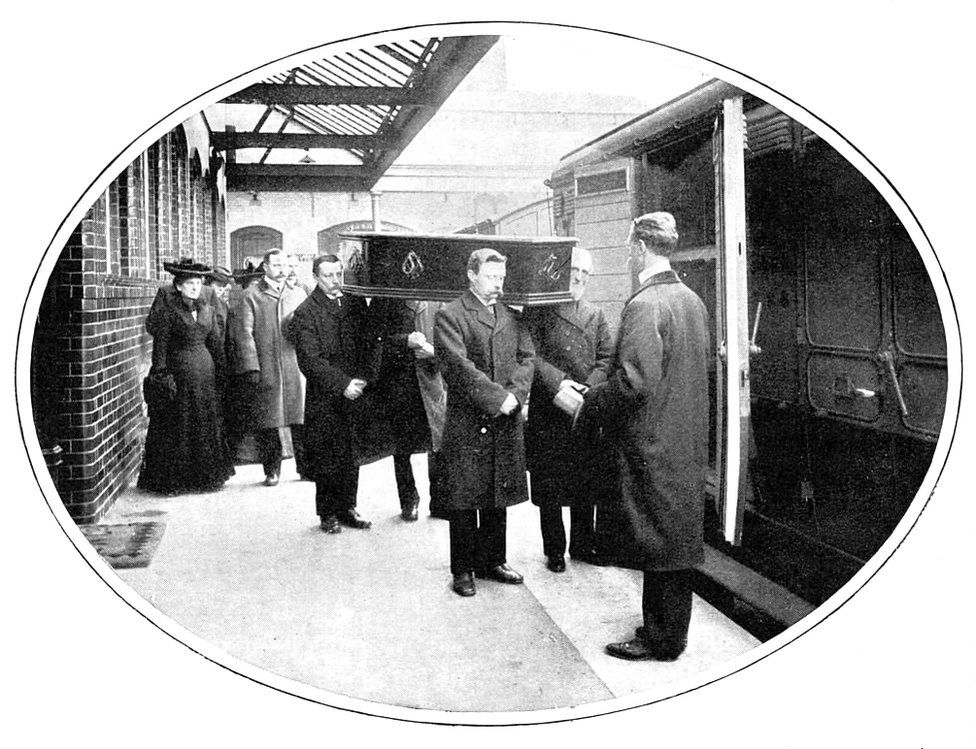-

-
-
Loading

Loading

The article discusses the history of the London Necropolis Railway, which operated from 1854 to 1941. The railway was established to address the overcrowding of burial grounds in London due to the city's rapid growth. The first burial at the newly created Brookwood Cemetery took place in an unmarked grave that was standard for those who couldn't afford a proper burial. The burial grounds in London were running out of space, and many churchyards were filled with bodies. Grave-diggers at St. Clement's testified that they had to chop up coffins and bodies to make room for new burials. The situation became so dire that a burial ground outside London was deemed necessary. In 1851, the Burials Act was passed to amend the laws concerning burial in the city. The London Necropolis and National Mausoleum Company (LNC) was subsequently formed with the goal of creating a single burial ground. To make the Brookwood Cemetery more appealing, the LNC made great efforts to design it as an attractive and peaceful location. However, getting to the cemetery was a challenge due to the distance from London. The newly established South Western Main Line railway ran alongside the cemetery, providing a more efficient means of transportation. The article highlights some notable individuals buried at Brookwood Cemetery, including painter John Singer Sargent, Horatia Nelson Johnson (the granddaughter of Lord Nelson), and Sarah Eleanor Smith, the widow of the Titanic's captain. The article also discusses the objections of some groups to the combination of railway travel and burial services. They were concerned about mixing different social classes, denominations, and lifestyles. To address these concerns, the LNC operated a separate funeral train service with different categories of tickets for the living and the dead. First, second, and third-class tickets were provided for different religious and non-religious groups. Prices varied depending on the cemetery location and the type of burial. The London Necropolis Railway operated until 1941 when it was destroyed during a World War II air raid. After the war, funeral train services did not resume as motor cars and hearses became more popular and convenient. Today, the site of the Westminster Bridge terminus building still exists as Westminster Bridge House, and the track bed and platforms can still be found at Brookwood. National Rail has installed a section of track at the cemetery to commemorate the historic railway.